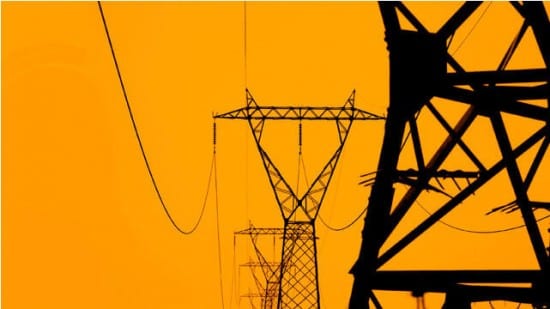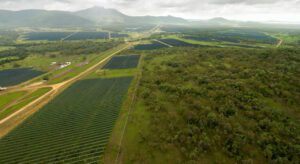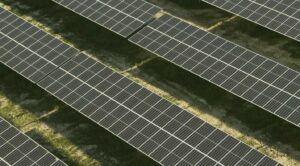Ouch. My electricity price just increased by a whopping 23.8 per cent.
Being a NSW residential consumer, I had been lead to believe that prices were going to be flat or at worst increasing only slightly (1.5%), so what on earth is going on?
The backstory behind this huge and surprising increase is actually pretty complex, but the really incredible bit is this – the big price rises have probably just started. Again.
Just as a reminder, electricity prices are made up of three key clusters of cost: 1) Energy and retail costs (52.4%), 2) Transmission and Distribution costs (40.6%) and 3)Energy efficiency and renewable scheme costs (7%) according to the AEMC’s last (2015) report.
It’s also important to remember that all electricity bills are split into two primary components – an energy cost (price per kWh) and a fixed cost ($/day).
Here is a summary of the most interesting parts of the New South Wales story for you.
1) Wholesale energy costs have virtually doubled
One of the key drivers behind the rise is an almost doubling of wholesale energy generation costs; the days of abundant, cheap coal fired energy are history and has caught almost every regulator and forecaster by surprise. Although shrouded in complexity, the insights that WattClarity provide here show that compared to last year, average NEM prices in NSW (in simple terms the bulk wholesale price of energy) are around 7.7c kWh in Q2, compared to around 3.6c kWh in Q2 2015. Interestingly, this is even higher than when the allegedly evil, economy destroying carbon price applied.
Secondly, gas is making an increasingly large contribution to our energy mix – and it has been steadily increasing in price as a result of a wide variety of factors, but most notably supply and demand as described here. Wholesale spot gas prices have risen from a historical level around $4/GJ to $29/GJ in Sydney recently.
Thirdly, both coal and gas energy prices (like most commodities) are driven to a significant extent by simple supply and demand. If supply is tight (which it is because a number of generators are off line) and demand is strong (which it is because it’s been freezing cold) then the price goes up – because it can.
Interestingly, if you are a retailer of energy and a generator (gentailer) then you potentially have a bet each way – especially if you are big in gas, so several of the large incumbents are in a very good position to gain either way.
There is also regular commentary in the media about the potential for price manipulation by generators, which may be having some impact on spot prices as well (retailers can buy energy on longer term contracts and also on short term spot markets), but I’ll leave this to much cleverer folks to comment on.
The bottom line is that the “raw” cost of producing energy has gone up hugely and unexpectedly and so by the time it’s marked up, transported and retailed to you and me we see a big increase. The only good news from this is that those of us who have solar should this reflected in higher feed-in tariffs in the future (!?) and we can extract higher value from our solar systems by offsetting this more expensive energy.
I knew solar made sense!
2) Network prices increased
On top of the wholesale cost rises, the poles and wires component of our electricity bill just went up by around 1.5% to 2% as well. That might not sound like a lot, but given that network costs already make up around half of the total price you pay, it is highly material.
Interestingly, this is very different to what was forecast only 6 months ago by the AEMC, in its annual report. They forecast that network and transmission costs would reduce by almost 2.5% this year, although in fairness they did note the potential for huge volatility and change.
But wait, there’s more!
As we wrote a few months ago, the NSW Networks have plenty more in store for us beyond this 4% increase above projections. You see, earlier this year the Network’s “spent a motza, defending the previous motza they spent, so they can spend a bigger motza in the future.”
Bloody genius. The AER tried to force them reduce their costs by $5B (which we will wear as increased network costs) but lost the case to the Networks. It’s not settled yet but they are seeking to recoup this amount, plus the costs of the multi million dollar legal challenge and in all likelihood this will hit us in July next year.
You could speculate that the sell off of some of these assets was part of the driver to increase revenues (and value) if you wanted to.
3)Falling long term demand
The other issue behind this is the longer term trend of energy demand reductions. As businesses and homes reduce their energy consumption by becoming more efficient, electricity companies across the value chain have “the death spiral” to contend with. As consumers use less, the fixed costs of generation and transmission in particular need to be recovered over less kWh’s of energy. This can only be achieved by 1)pushing up energy prices or 2) pushing up fixed costs – to get more from less, but as prices rise, consumers react and either use even less energy, or go solar – or both – starting the spiral all over again
I debated this very issue this week at the Energy Future Conference, held at the University of New South Wales. Fellow panel member Brian Spalding (Commissioner of the Australian Energy Market Commission) highlighted that the Power of Choice Review had been quite successful at helping to start the process of reinventing the energy market and had been designed to “treat all generation technologies equally”. Although our CEO agreed in principle, he highlighted that “there are some clear market failures already at play, that have the effect of de-incentivising solar in some cases – especially rapidly rising fixed costs “. I went on to describe how the steady transition to higher fixed charges and lower energy charges pushed out the payback period for self generation and storage.
Spalding was adamant that the Power of Choice process didn’t set out to make this happen, but acknowledged that “Electricity retailers do have the ability to (more or less) freely construct their bills at whatever ratio of energy to fixed costs they like within broad boundaries”.
The entirely probable result, (if you happen own a huge swathe of generation assets) would be to de-incentive self generation by moving towards more fixed costs.
And lo, the big incumbents who own lots of assets, are doing exactly this.
4)Greenpower costs up
In my case, a chunk of my 23.8% price rise was due to my personal choice to use Green Power for the balance of my energy needs. However, Greenpower prices have gone up by around 30-40%. Why? Well in simplistic terms it’s because of long term uncertainty created the Government around the Renewable Energy Target. The policy vacuum and disdain for renewables caused the large scale renewable market to stall for the last couple of years and this has created an undersupply situation for Large Scale Certificates (LGC’s) and as a result, LGC prices have gone up sharply. These LGC prices are a component of Green Power prices and so, prices increase. The only saving grace here is that this money is going directly to renewable generators, not the coal generators.
5) What to do
So as an energy consumer, what can you do to deal with energy price rises like this one?
Firstly, you can make a personal choice to buy, or not, Green Power. That can shave around 10% off your total bill at the moment.
Secondly, you can shop around. Retailers count on you not doing so and tend to creep prices up. You can save 10% or so by keeping your supplier honest or switching. Or like me, you can find a retailer that does not penalise you for being loyal. Amazingly (or not!?), the discount you get from most retailers tends to disappear after a year or so. Not mine.
Thirdly, you can choose a tariff that has lower fixed charges and higher energy charges which gives you more control over what you are paying. (NB pay special attention to some of the allegedly “newer, more innovative” price offers around which offers subscriptions, memberships or flat daily energy costs, they are generally the worst)
Fourth, (well of course) you can add solar, storage and a good dash of energy management to reduce your energy component as much as possible. The saving grace is that as the price per kWh increases, solar savings becomes even more valuable.
The medium term
Personally, I think the current NSW situation I have described is a bit like the canary in the coal mine (pun intended). The energy market is transitioning, but’s it more like an erratic, pimple faced, raging teenage hormonal transition than an orderly market shift. There has been progress but there are a lot of things that are not working, not going to plan for anyone and in all likelihood it’s going to get a lot messier before it gets better.
In NSW’ case, how the pending Network cost increases are handled will be very telling and how the Gentailers behaviour changes will be fascinating to watch.
Source: Roof Juice. Reproduced with permission.







